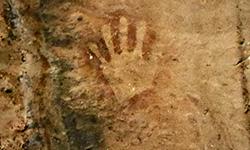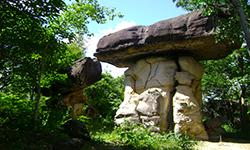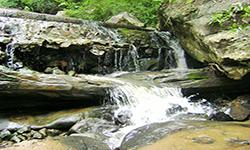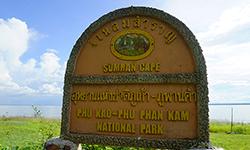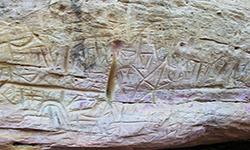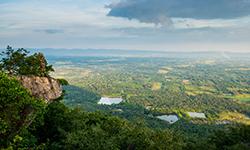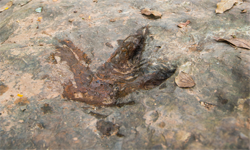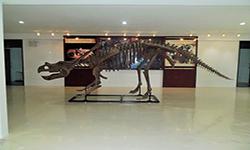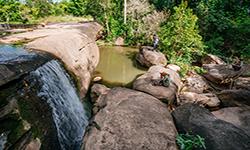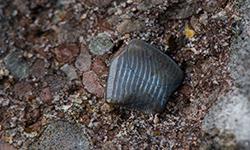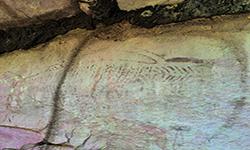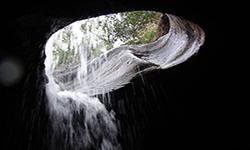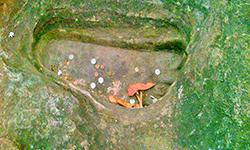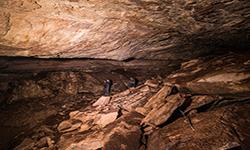Phu Kao - Phu Phan Kham National Park
Contact Location : Moo. 6, Ban Kho Sub-district, Non-Sang District, Nong Bua Lamphu Province 39140 or P.O. Box 2, Ubol Ratana Provincial Post Office Khon Kaen Province 40250
Telephone Number : (+66) 63 648 4821
Email : Phu.kao@hotmail.com
Facebook : Phu Kao Phu Phan Kham National Park
Information
-
Background
Originally, the Royal Forest Department had considered designating the forest area in Phu Kao to be the forest of other hard woods concession project according to the Royal Forest Department Letter No. Ko So 0703/38 dated January 5, 1970. Later on, by the Ministry of Agriculture and Cooperatives, this Phu Kao forest, was declared as a National Reserved Forest ("Phu Kao Forest") according to Ministerial Regulation No. 490 (BE 2515) dated October 20, 2515. And on February 14, 1981, Mr. Suphan Supanya, Member of the Udon Thani House of Representatives, submitted a letter requesting the prime minister to consider establishing the Phu Kao National Reserved Forest in Udon Thani Province as a national park.
Therefore, the Secretariat of the Prime Minister submitted a letter No. So Ro. 0107 (Ngo So So)/3782 dated February 24, 1981 to the Ministry of Agriculture and Cooperatives, requesting to consider the matter. The Deputy Director-General of the Royal Forest Department (Mr. Chamnong Phothisaro) acts on behalf of the Director-General of the Royal Forest Department had a note at the end of the document of the National Park Division No. Ko So 0708/1198 dated April 8, 1981, stating that officers would be sent to explore the area. The National Park Division of the Forest Department has therefore issued an order No. 571/2524, ordering Mr. Winai Chalarak, Forest Officer 4, to explore preliminary information. The survey found that Phu Kao National Reserved Forest consists of plants and wildlife, and the highlight is beautiful natural scenery.
It is appropriate to establish as a national park according to the preliminary survey report No. Ko So 0708 (Pho Pho)/257 dated July 29,1981. And the Council of Non Sang Sub-district, Udon Thani Province, released a letter dated February 7, 1983, to support the establishment of the area as a national park. There was a resolution at the meeting No. 2/1983 on May 24, 1983, to designate the area to be a National Park.
Later, Phu Kao National Park (Mr. Phicha Pittayakachonwut) issued a letter No. Ko So 0713 (Pho Ko) /8 dated February 8, 1984, requesting combining the additional area in the Phu Phan Kham Mountains and the northwestern part of the Ubol Ratana Dam, which has a relatively abundant deciduous dipterocarp forest, and beautiful scenery around the reservoir with the national park to achieve the complete preservation of natural resources.
These areas have been declared as a National Park by a royal decree specifying the area of Phu Kao forest land in the areas of Hua Na and Na Mafueang Sub-district, Mueang District, Ban Thin, Khok Muang, Phatthana Nikhom, Non Mueang and Nong Ruea Sub-district, Non-Sang District, Nong Bua Lamphu Province and Phu Phan Forest land. In the areas of Kut Du, Non-Sang, Ban Kho, Nong Ruea and Khok Yai Sub-district, Non Sang District, Nong Bua Lamphu Province, and Khok Sung Forest, Ban Dong Forest in Si Suk Samran, Na Kham, Ban Dong and Khuean Ubolratana Sub-district, Khon Kaen Province It was a National Park in 1985, which was announced in the Government Gazette, Volume 102, Part 130, dated September 20, 1985. It is the 50th National Park in Thailand.
Note : After paying the entrance fee to the National Park, please carry the receipt for inspection.

198,973.00 rai
|
Red Palm Cliff |
Different kinds of stone pillars |
||
|
Ubonrat Dam Reservoir |
Heaven Tower Viewpoint |
||
|
Tad Hin Taek Waterfall |
Tad Ton Waterfall |
||
|
Cape Samran |
Khao Khat Viewpoint |
||
|
Geometric cliff |
Ma luk khuk khak cliff |
||
|
Dinosaur footprints |
Fossil Museum |
||
|
Tad Fa Waterfall |
Shell Cemetery |
||
|
Mum Cave |
Nam Lod Cave |
||
|
The Hunter's Footprints |
Sam Ta Cave |
||
Nature trails ⇔ Trekking ⇔ Visit Waterfall ⇔ Observe flowers/plant ⇔ Bird/Butterfly ⇔ Stargazing ⇔ Camping
Welfare shop : (coffee, drinking water, snacks) is open daily from 9.00 - 16.00 hrs.
Mobile phone signal :
1. Mobile phone coverage:1. National Park Headquarters: AIS, TRUE, DTAC
2. Tourist service area (Phu Phan Kham Zone): AIS, TRUE, DTAC
3. National Park tourist area (Phu Kao zone): AIS
|
|
The rocks found in Phu Kao-Phu Phan Kham National Park are Khorat Soil Group, which originated in the Mesozoic Era about 230 million years ago, consisting of 6 rock groups as follows: 1. Phu Phan Formation, which is white-brown pebbly sandstone. The range of grains are from medium-sized to coarse grain, mixed with gravels and good erosion resistance. 2. Sao Khua Formation : The rock has the characteristics of slightly red sandstone. The grains are white and small. In the area where the siltstone appears, there are some gravels and the shape of the mountain is sloping. 3. Phra Wihan Formation - Most of the rocks are white and pink sandstone. The range of grains are from medium-sized to coarse. 4. Phu Kradung Formation features mostly reddish-and-magenta brown. It contains mica and is mixed with reddish-brown siltstone. 5. Nam Phong Formation contains red and brown sandstone, mixed with a little gravel and pebbles. 6. Khok Kruat Formation (Kkk) contains R. Coast sandstone, siltstone, mudstone, and conglomerate maroon. The colors found include purple, red, white, and brown. The layers range from medium to thick and the grains of sedimentary rocks range from fine to medium-sized. There are rip-up clasts, and in some layers, a little gravel is found. In some areas, it is interspersed with red and reddish-brown shale and sandstone. Lime conglomerate is found on the top layer. |
|
The seasons of Phu Kao-Phu Phan Kham National Park are divided into 3 seasons. Summer is between March and May and the average temperature is very high in April. The rainy season is between June and October and the rainfall is heavy during August-October. The winter is between November and February. - Maximum temperature is 41 degrees Celsius (during March-April of every year). - Minimum temperature is 12 degrees Celsius (during December and January of every year) - The amount of rainfall is approximately 1,295.5 cubic millimeters per year. Unusual climatic features and weather variations cause both physical and biological effects on Phu Kao-Phu Phan Kham National Park, but no serious natural disasters except for storms at the beginning and end of the rainy season, which cause strong winds and tidal currents in the North Lake Ubol Ratana Dam. The wave ridge is about 30 cm high (dangerous for small boats). If heavy rain continues, here may be a runoff. Drainage in some areas is slow, especially on the roads, so when the water runs down the road, it's difficult to travel, especially on the gravel roads, in both the part of Phu Kao and the part of Phu Phan Kham. Moreover, it could cause large sandstone to collaps (the mountain pass in front of the national park headquarters was cut off before), causing cracks, damage, and clogging drainage channels along the roadside. |
|
|
|
Flora and Wildlife 2.) The Mixed Deciduous Forest is located in the area that is more arid than that of the rainforest but moister than that of deciduous dipterocarp forests. The mixed deciduous forests of the Phu Kao-Phu Phan Kham National Park are found in the plain area within the inner hills of the Phu Kao part and the plains on the side of the Phu Moei hill and the outer rim of the mountains, especially the northern part of the hill, and aroundthe hillside near Phra Phutthabat Phu Kao Temple. As for the Phu Phan Kham Mountain range, small patches of mixed deciduous forest can be found in the areas with a slight slope on the side of Khon Kaen Province. The forest of this type covers an area of about 10% of the Phu Kao - Phu Phan Kham National Park, consisting of important plants such as: Xylia xylocarpa, Burma Padauk, Afzelia xylocarpa, Sindora siamensis, Irvingia malayana, Ceylon oak, Vitex pinnata, Morinda exserta Roxb., and Cotton tree, and the undergrowth plants consist of Gigantochloa albociliata Munro, Alang-alang, etc. 3.) Dry Dipterocarpus Forest: this type of forest covers most of the area in of Phu Kao – Phu Phan Kham National Park which accounts for about 70 percent of the area. The forests generally occur on hilly slopes with sandstone outcrops and on low-moisture plains. The areas in which a wide area of deciduous dipterocarp forest can be found is the mountainous area of the outer rim of the mountain and around the ridge of Phu Phan Kham Mountain range. It consists of important plants such as: Hairy Keruing, Dipterocarpus tuberculatus Roxb., White Meranti, Tummy-wood, Haldina cordifolia (Roxb.) Ridsdale, Creeping Lady's Sorrel, Hog Plum, Phyllanthus emblica. The undergrown plants include Cycas siamensis Miq., Arundinaria pusilia, Phoenix acaulis Ham, many types of vines, and some varieties of thorn bushes, including Melientha suavis Pierre. In terms of wildlife, according to the present condition, There are very few animal species remaining in the area of Phu Kao-Phu Phan Kham National Park. due to the two important causes: destruction or hunting and destruction of animal habitats/habitats.
The remaining animals in the area of Phu Kao-Phu Phan Kham National Park that can be identified from their traces and from people's recounting are as follows: 1.) Mammals: "Wild Boar, many species of Civet, various types of Musk, Squirrels, many kinds of Chipmunk, various types of Wild Rats, Barking Deer, Hare, Mole, Marmot, and Loris. 2.) Birds consist of wild fowl, Peacock, Parrots, Cockatoo, many types of Doves, various types of Drongo, Dollar Roller, Wild Owls, Common Myna, many types of Woodpeckers, many types of Hawks, Lesser Whistling-Duck, Cotton Pygmy Goose, and Little Egret. 3.) Reptiles consist of: Asian Forest Tortoise, Elongated Tortoise, many types of Lizards, many types of Geckos, many types of Skinks, many types of Lizards, and many types of Snakes, both venomous and non-venomous. 4.) Amphibians consist of: Frogs, Green Paddy Frogs, Toads, and Asian painted frogs. 5.) Fish: Phu Kao-Phu Phan Kham National Park has the area of the lake above the Ubol Ratana Dam about 85 square kilometers or 53,125 rai and the creeks and streams in both the areas of the Phu Kao and the Phu Phan Kham, consisting of fish species that occur both naturally and cultured. |
How to get there by car :
From Khon Kaen Province, take Highway No. 2 (Khon Kaen-Udon Thani) and turn left at Ban Kham Kaen Khun heading for Ubolratana District, continuing on the Highway No. 2109. At Ubon Rat District, turn right onto Highway No. 2146 and proceed on until arriving in Phu Kao-Phu Phan Kham National Park Headquarters, with a total distance of 63 kilometers.
From Nong Bua Lamphu Province, turn left at Ban Wang Muen to take Highway No. 2146 (Nong Bua Lamphu-Ubon Rat District), turn left at Ban Sok Chan and continue travelling to Phu Kao-Phu Phan Kham National Park Headquarters, with a total distance of 57 kilometers.
-Phu Kao-Phu Phan Kham National Park Headquarters,
-The National Park Ranger Station Temporary (Na Kham)
-The National Park Ranger Station at Pho Ko No. 1 (Wang Mon),
-The National Park Ranger Station Temporary (Hosawan)
-The National Park Ranger Station at Pho Ko No. 2 (Nama Feung)
-Checkpoint Temporary (Tat Ton)
-The National Park Ranger Station at Pho Ko No. 3 (Non-Tan),
-Checkpoint Temporary (Tat Hai)
-The National Park Ranger Station at Pho Ko No. 4 (Nong Saeng),
-Checkpoint Temporary (Phu Wat)
-The National Park Ranger Station at Pho Ko No. 5 (Tham Kok Du),
-Checkpoint Temporary (non-Hua Chang)
-The National Park Ranger Station at Pho Ko No. 6 (Pang Ku)
- Accommodation : Phu kao 101 (Stone Rose)
- Accommodation : Khitchakut 105 (Kritsana 2)
- Accommodation : Khitchakut 106 (Kritsana 3)
- Accommodation : Khitchakut 107 (Kritsana 4)

